


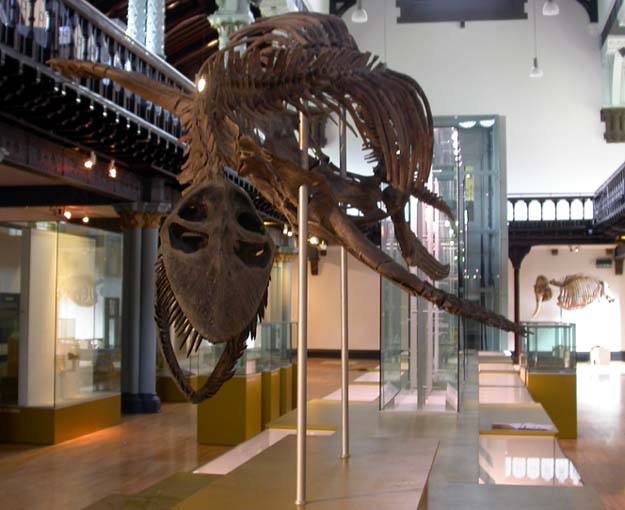
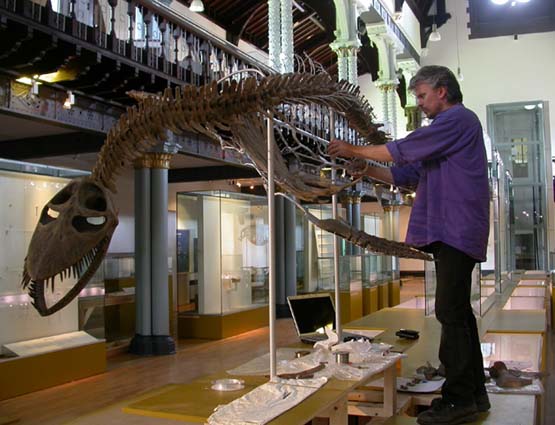

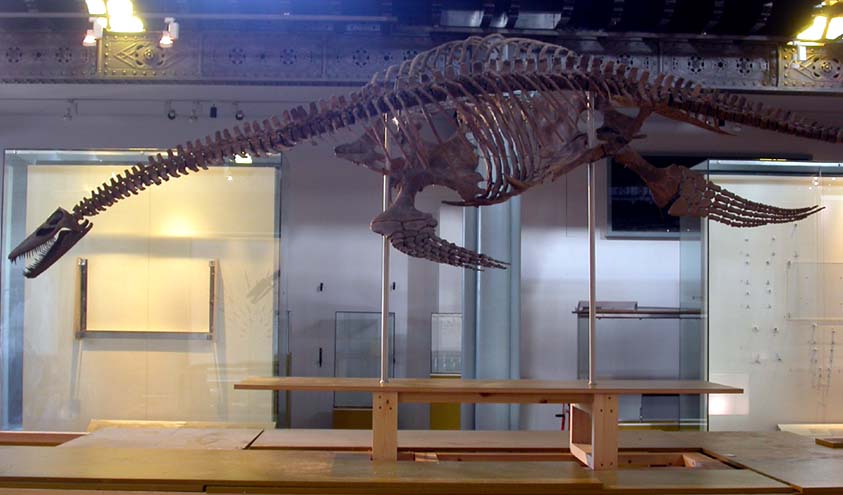
For more details about what we can do for you, or for a quote, please contact:
enquiries@natural-history-conservation.com
We are members of the United Kingdom Institute for Conservation of Historic and Artistic Works
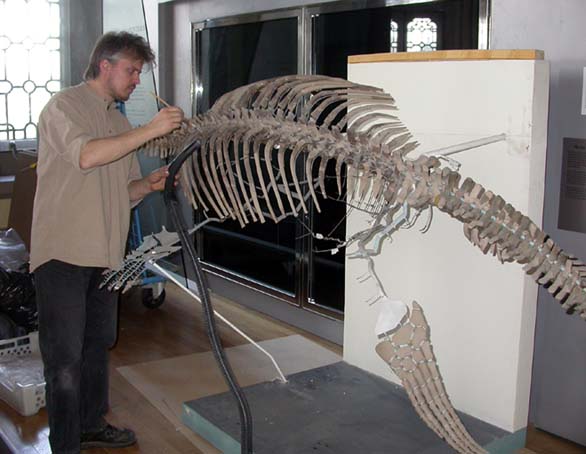 Nigel Larkin was asked to adjust the old mount to make it self-supporting from underneath.
The first part of the project entailed three days of photographing, labelling and cleaning all the bones
(see image to the left - note how the skeleton is mounted to the 'wall' of MDF to the side). This was followed by
demounting the bones and packing them away, then
transporting the bones and metal mount to the conservation studio.
Nigel Larkin was asked to adjust the old mount to make it self-supporting from underneath.
The first part of the project entailed three days of photographing, labelling and cleaning all the bones
(see image to the left - note how the skeleton is mounted to the 'wall' of MDF to the side). This was followed by
demounting the bones and packing them away, then
transporting the bones and metal mount to the conservation studio.
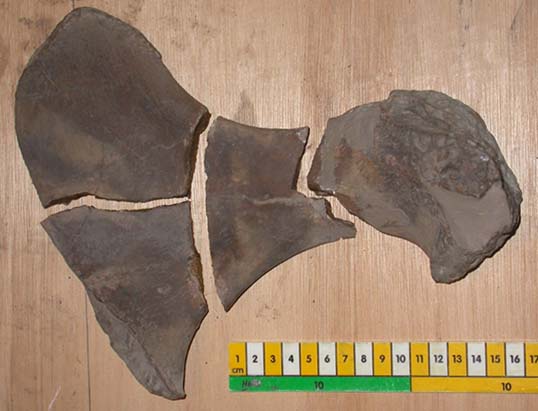
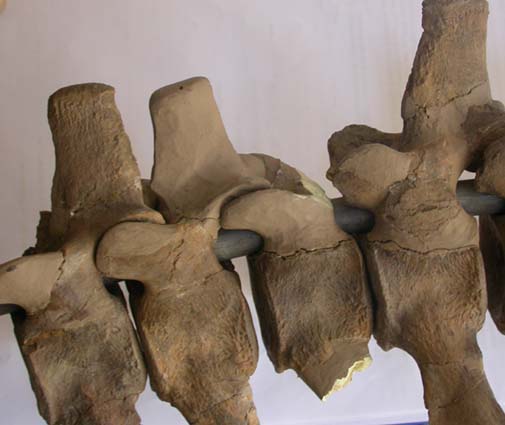 Many elements of the skeleton are resin or plaster casts,
but most are real bone. However, all the bones and casts are fragile, and many bones are made up of many pieces glued
together. A few were already broken and required repair (see the pelvic bone in pieces to the left, and
vertebra to the right without its neural spine or transverse process). Some were scuffed and required
touching-up with paint. Old ‘intervertebral disks’ had been made many years ago from a non-archival foam and
were degraded. These had to be replaced with an archival foam, each individually carved to fit.
Many elements of the skeleton are resin or plaster casts,
but most are real bone. However, all the bones and casts are fragile, and many bones are made up of many pieces glued
together. A few were already broken and required repair (see the pelvic bone in pieces to the left, and
vertebra to the right without its neural spine or transverse process). Some were scuffed and required
touching-up with paint. Old ‘intervertebral disks’ had been made many years ago from a non-archival foam and
were degraded. These had to be replaced with an archival foam, each individually carved to fit.







For more details about what we can do for you, or for a quote, please contact:
enquiries@natural-history-conservation.com
We are members of the United Kingdom Institute for Conservation of Historic and Artistic Works